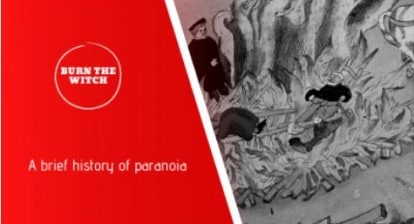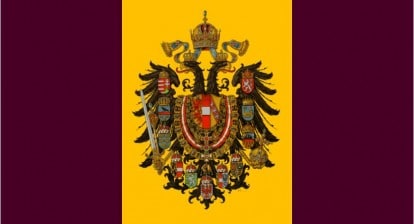Hadrian’s Wall and Vindolanda – Remains of a Roman Britain
Transcript/Blogpost
The Roman Empire was vast and extensive, covering almost all of Europe. Britain also came under its rule for 400 years. First Julius Caesar visited in 55 BC, but he did not stay. Eventually, in 43 AD permanent conquest of the British Isles began and Britain became a Roman province. At the time, Britain was home to many tribes, some of whom had been already trading with the Romans and were happy to welcome the invaders. Others however, like the Picts of the north, in what is now Scotland, were particularly unimpressed by the Romans and kept rebelling against the conquerors, sometimes even venturing south to attack.
Rome got a new emperor from 117 to 138 AD. His name was Hadrian and he visited Britain, which was one of the farthest outposts of his empire, in 122 AD. It was Hadrian who decided to build a wall between England and Scotland to defend his territories in England. The construction of the wall probably began in the same year, and it took six years to build. One of the theories is that the Wall was built to keep the Picts out. But not all scholars agree to this. Others suggest that the reason for its construction could have been to control trading and the economy by keeping people in or out.
Lindisfarne – Where the Vikings Entered England
You can still see the remains of Hadrian’s Wall crossing east to west from the River Tyne to the Solway Firth and I just went to see it.
The original plan was for a stone or turf wall to be built, with a guarded gate every mile and two observation towers in between, and fronted by a wide, deep ditch. By the time the wall was completed, 14 forts had been added as well as an earthwork known as the Vallum to the south.
The inscription on a copper alloy pan, known as Ilam pan, a 2nd-century souvenir of Hadrian’s Wall found in 2003, suggests that it was called the vallum Aelii, Aelius being Hadrian’s family name.
The Romans, ever the efficient engineers, placed the Wall slightly north of the existing line of military installations between the River Tyne and the Solway Firth, making use of the topography of the area. The total length of the Wall was 73 miles or about 117 km and the eastern 30-mile section was made of turf, while the rest was made of stone.
In front was a substantial ditch, except where crags or rivers made this unnecessary and after each mile a gate was placed, called a milecastle, protected by a small guard post. Between each pair of milecastles lay two observation towers.
The stone wall had a maximum height of about 15 feet (4.6 metres) and was 3 metres wide, which is enough for there to have been a walkway along the top, and perhaps also a parapet wall. The turf wall was 6 metres wide.
It is thought that three legions of regular, trained troops in Britain, each consisting of about 5,000 heavily armed infantrymen, provided the men building the Wall, assisted by the auxiliary and the British fleet. However, once it was built it was manned only by auxiliary regiments either 500 or 1,000 strong and either infantry or cavalry or both.
The remains of many of the towers can be seen strewn across the length of the wall. There are also remains of various towns along its length. South of Hadrian’s wall is Vindolanda, which was a Roman auxiliary fort. Vindolanda actually predated the wall and archaeological excavations of the site show that it was under Roman occupation from roughly 85 AD to 370 AD. Located near the modern village of Bardon Mill in Northumberland, it guarded the Stanegate, the Roman road from the River Tyne to the Solway Firth.
The site is most famous for the Vindolanda tablets, a set of wooden leaf-tablets that were, at the time of their discovery in 1973, the oldest surviving handwritten documents in Britain.
The earliest Roman forts for the auxiliary garrisons at Vindolanda were built of turf and wood in 85 AD and are now buried deep in the soil. Five timber forts were built and demolished one after the other. A stone fort was subsequently built but was then demolished and replaced by an unconventional set of army buildings on the west, and an unusual array of many round stone huts where the old fort had been. Some of these circular huts are visible by the north and the southwest walls of the final stone fort. The stone army buildings were also demolished, and a large new stone fort was built where the huts had been. A self-governing village, known as a vicus, developed to the west of the fort. This contained several rows of buildings, each with several one-room chambers. To the south of the fort is a thermae – a large imperial bath complex – that would have been used by many of the people living on the site. The later stone fort, and the adjoining village, remained in use until approximately 285 AD, when it was inexplicably abandoned. In about 300 AD the fort was rebuilt, but the vicus was not reoccupied, so most likely the area remained too unsafe for life outside the defended walls of the fort.
It is possible that subsequently occupation of the fort declined slowly after the Romans left in 410 AD. Excavations at Vindolanda started in the 1930s by Eric Birley and continue to this day, first by his sons and now his grandson Andrew Birley. There is a fantastic museum on the site that walks one through life in Roman Britain. Inside, it also houses artefacts – shoes and pottery being the more famous ones. And of course, the Vindolanda stone tablets can also be seen at the museum.
Also check out Ambleside Roman Fort
And what became of the Wall? After Hadrian’s death, emperor Antoninus Pius built another wall further north – this was a turf wall known as the Antonine Wall. But it was abandoned 20 years later, and Hadrian’s Wall was brought back into use. Hadrian’s Wall continued to be utilized till the late 2nd century AD. In 180 AD, a major war took place, tribes crossed the Wall and killed a general and his troops. Many of the turrets were probably abandoned at this time. In the 2nd and 3rd centuries, many of the milecastles were narrowed to only allow for pedestrian traffic and the Wall was repaired. Hadrian’s Wall had an overall life of 300 years and according to researchers it continued till the end of the Roman occupation of Britain in 410 AD. The latest coins found on Hadrian’s Wall were minted in 403–6 AD. Eventually, the Wall was plundered for its stone, which were used to construct churches, houses and farms nearby. What remains now is just a fraction of the original. It became a UNESCO World Heritage Site in 1987.
Recently archaeologists across Britain, including those working on Vindolanda have said that climate change is threatening to destroy the treasures buried at the site, as changing weather patterns dry out peatlands, under which a lot of Britain’s past is buried. Because peat does not contain a lot of oxygen organic material – such as the wooden tablets and leather shoes found at Vindolanda – can survive in it. But if the peatlands dry out, the oxygen that enters the system can start the decomposition of these artefacts, eventually badly damaging them. That would mean losing out on the artefacts that can still be excavated.
Both Vindolanda and Hadrian’s Wall are brilliant examples of Roman Britain and are definitely worth a visit.







